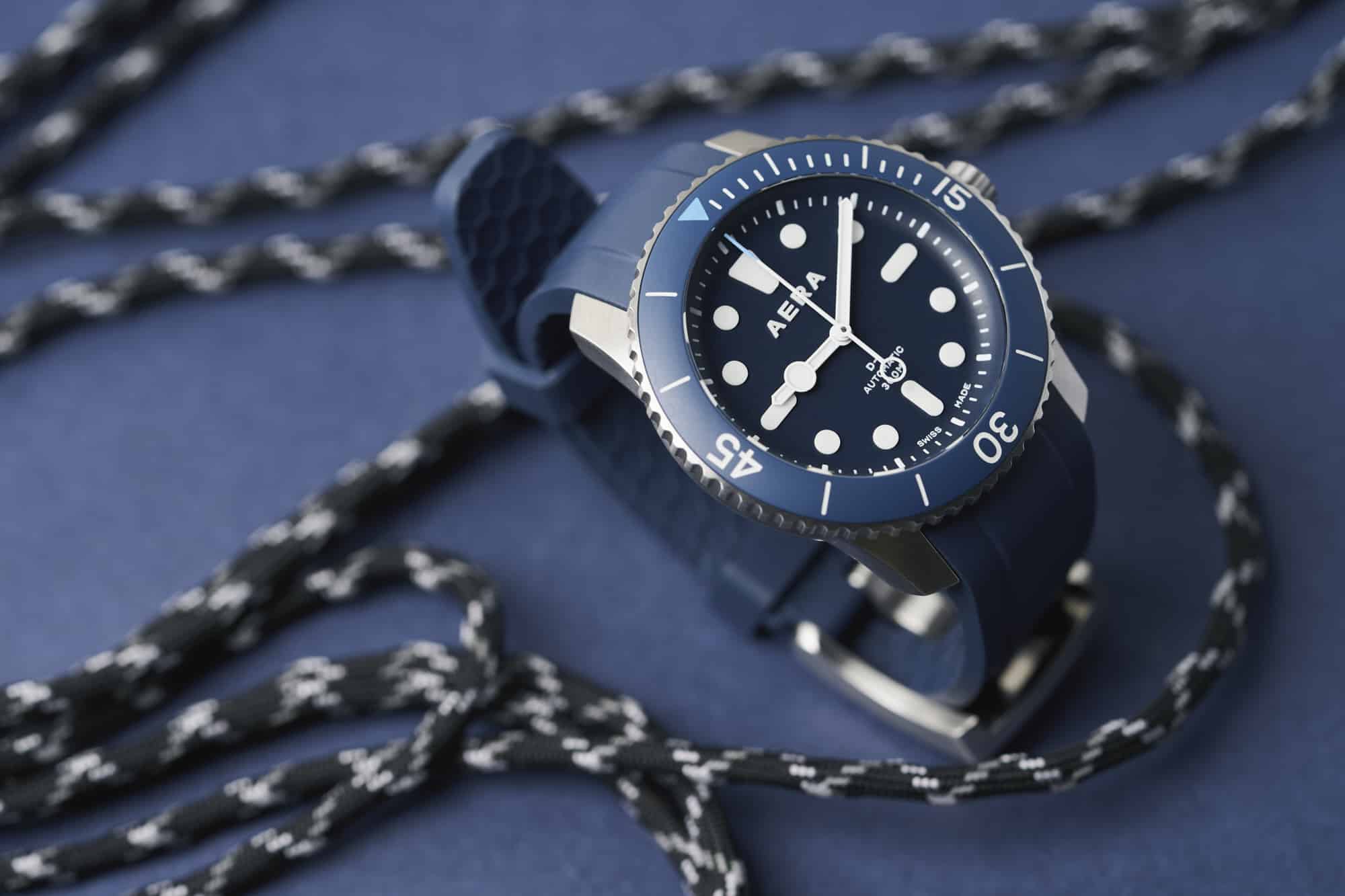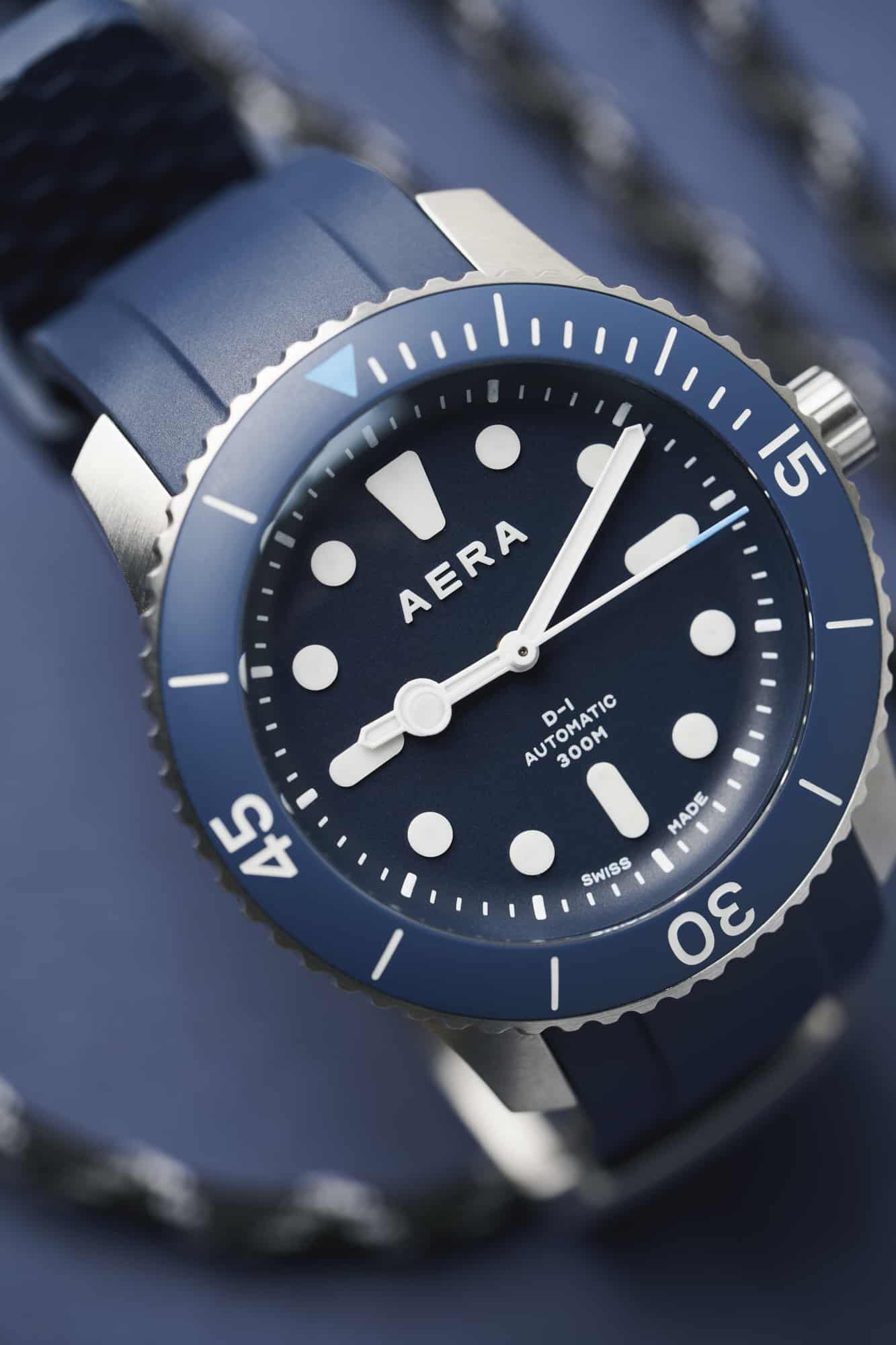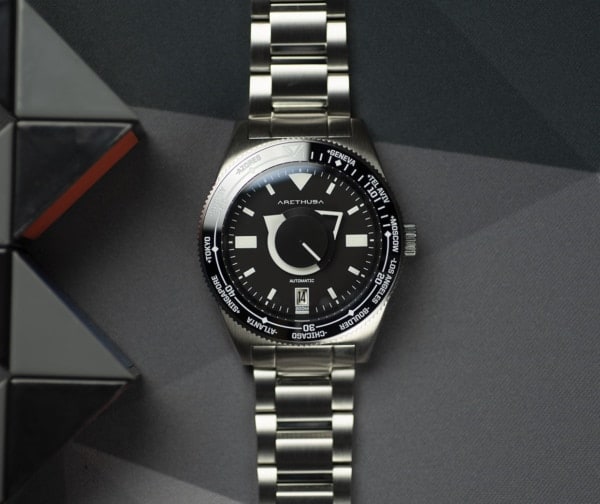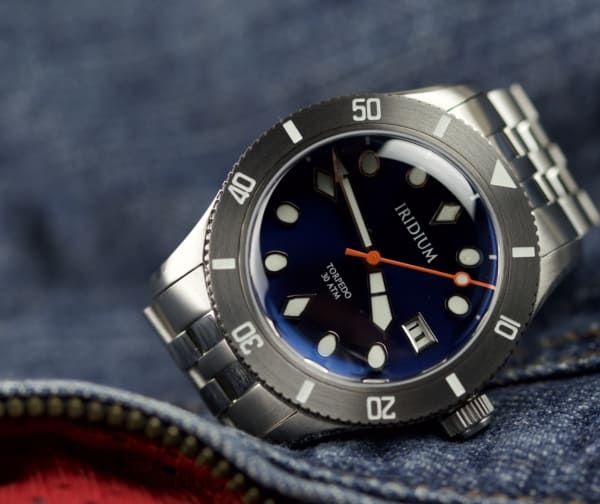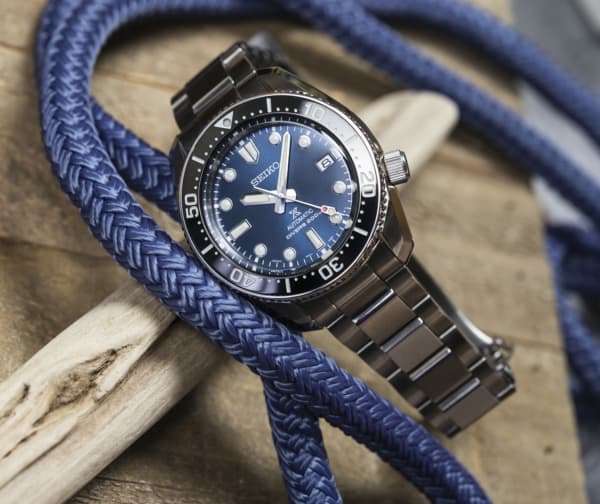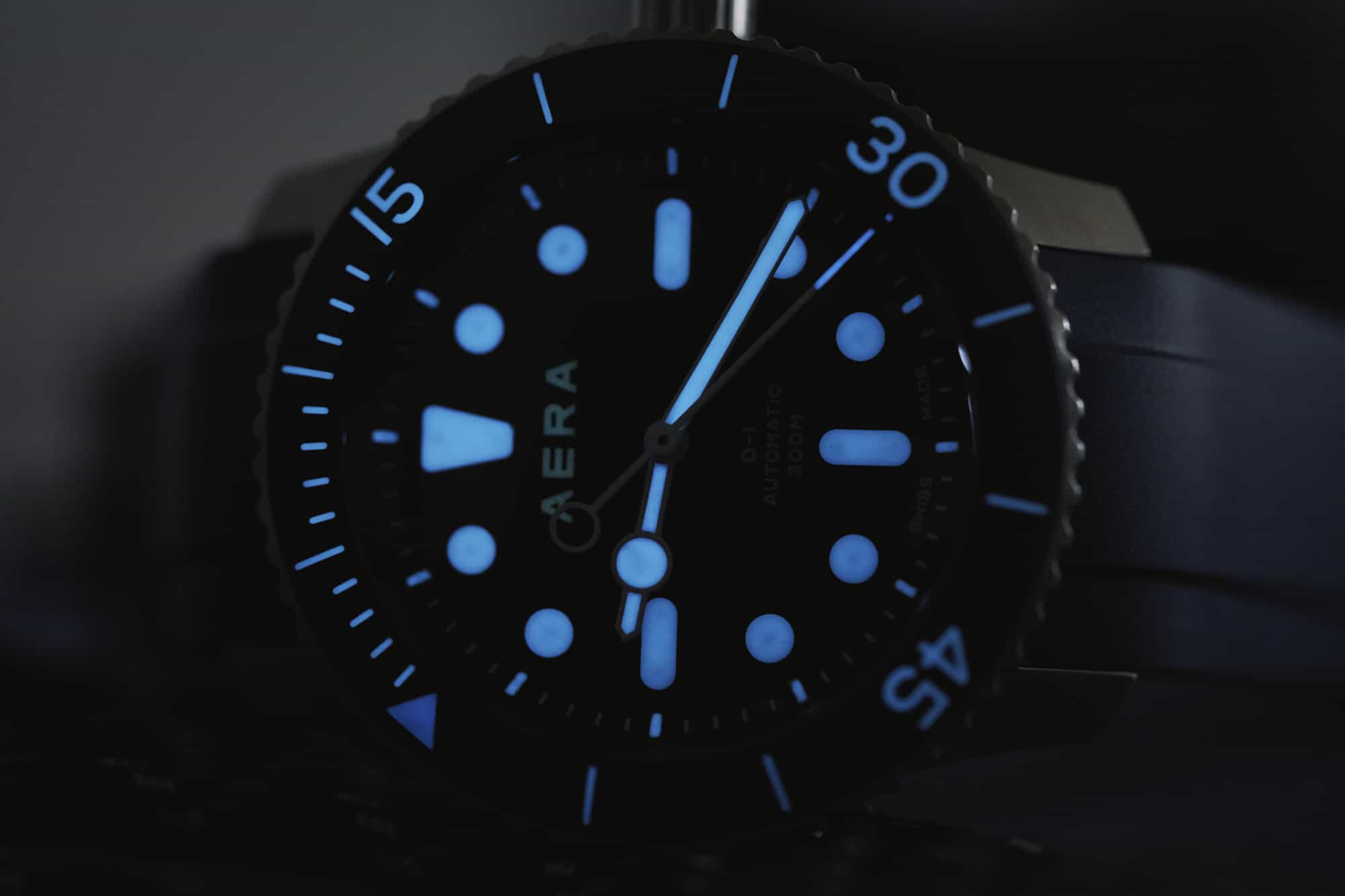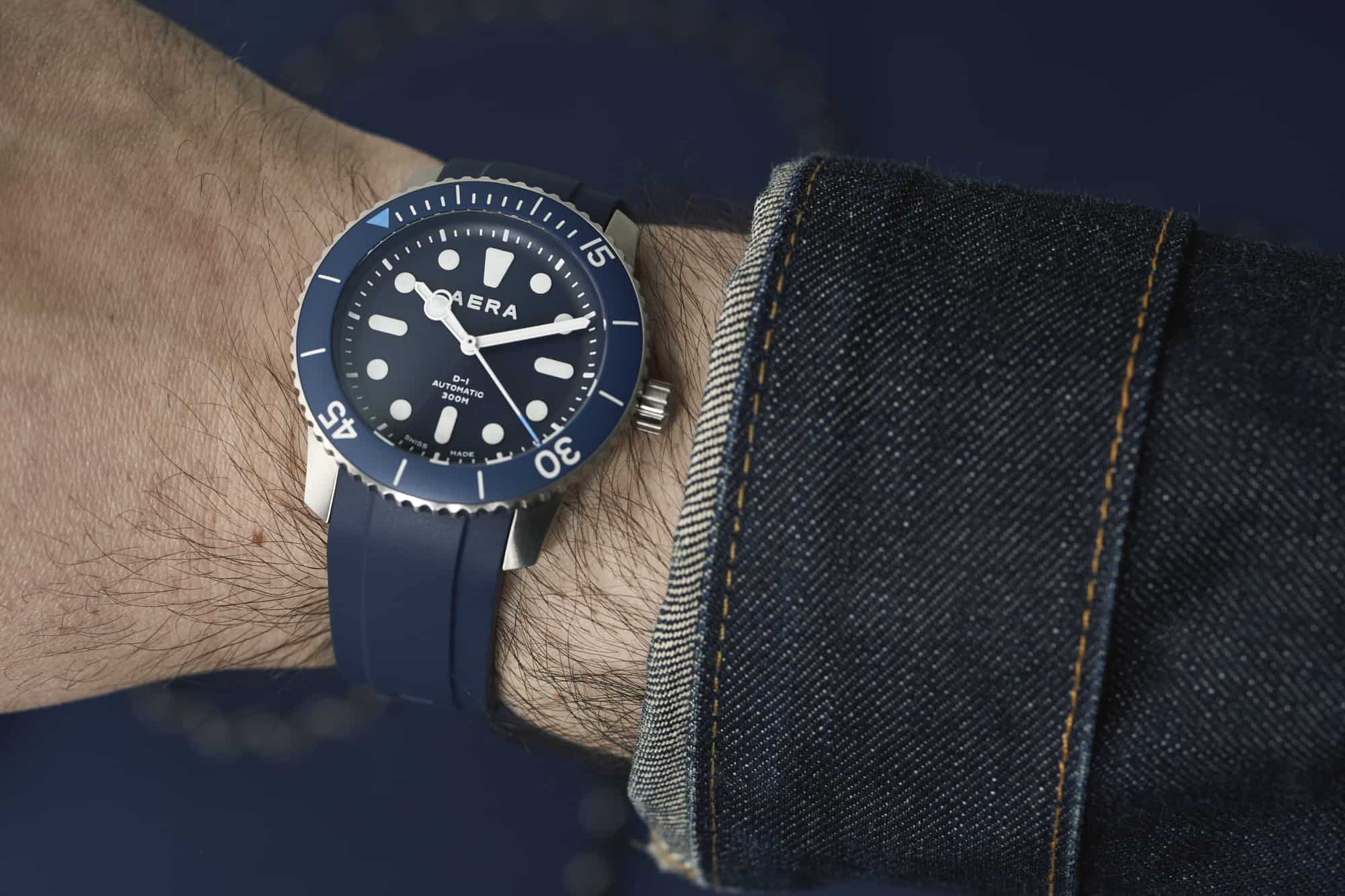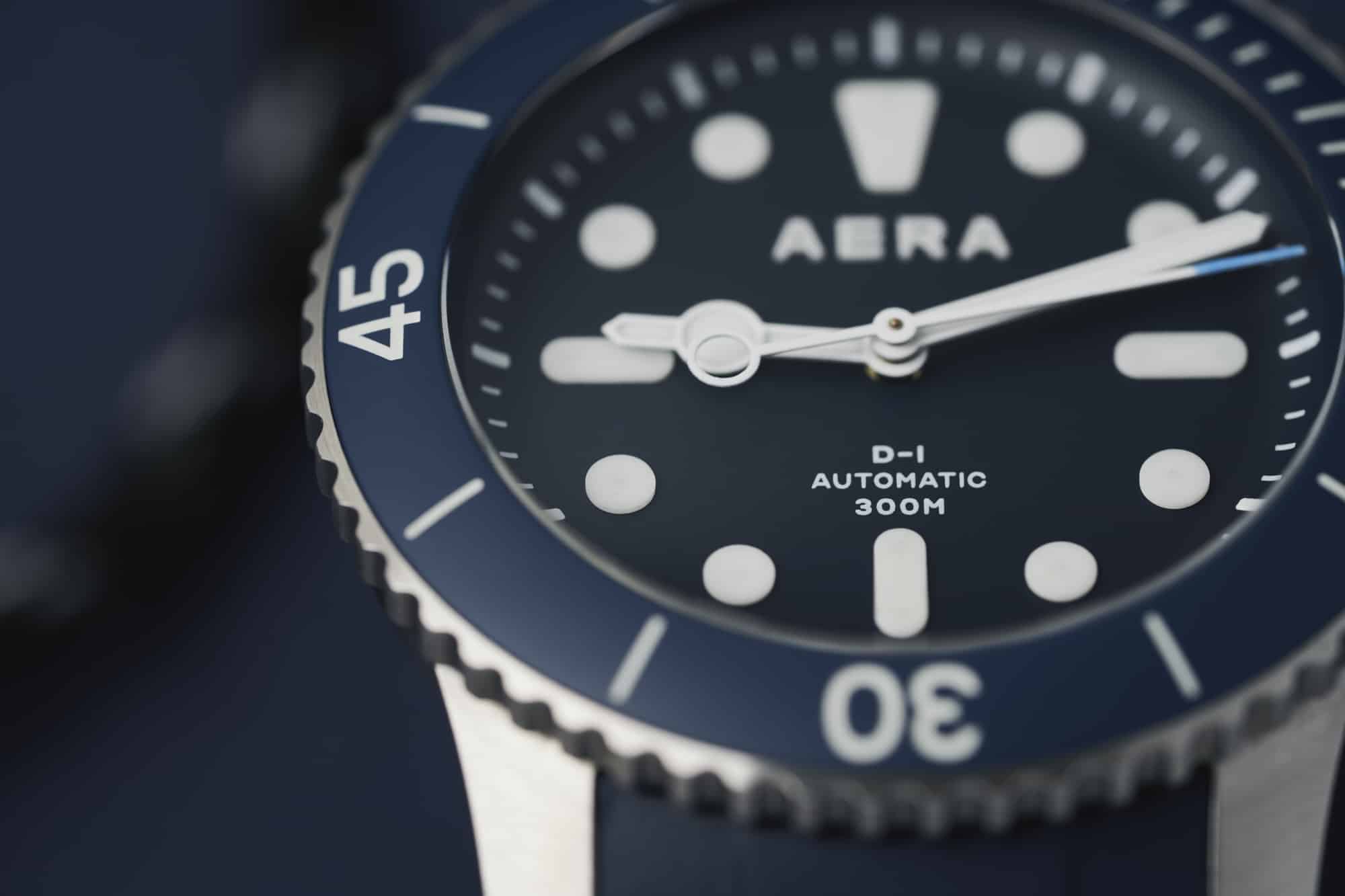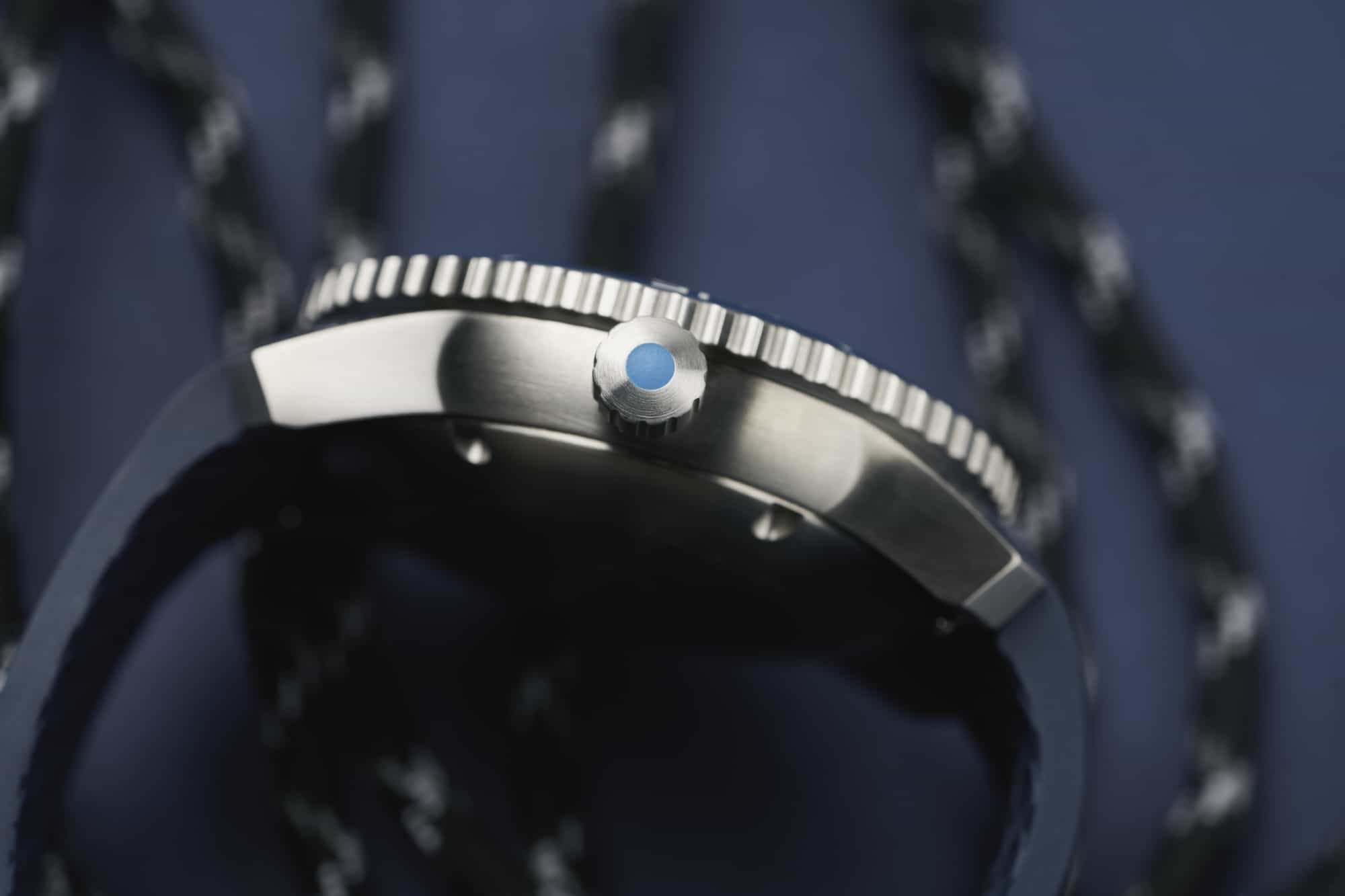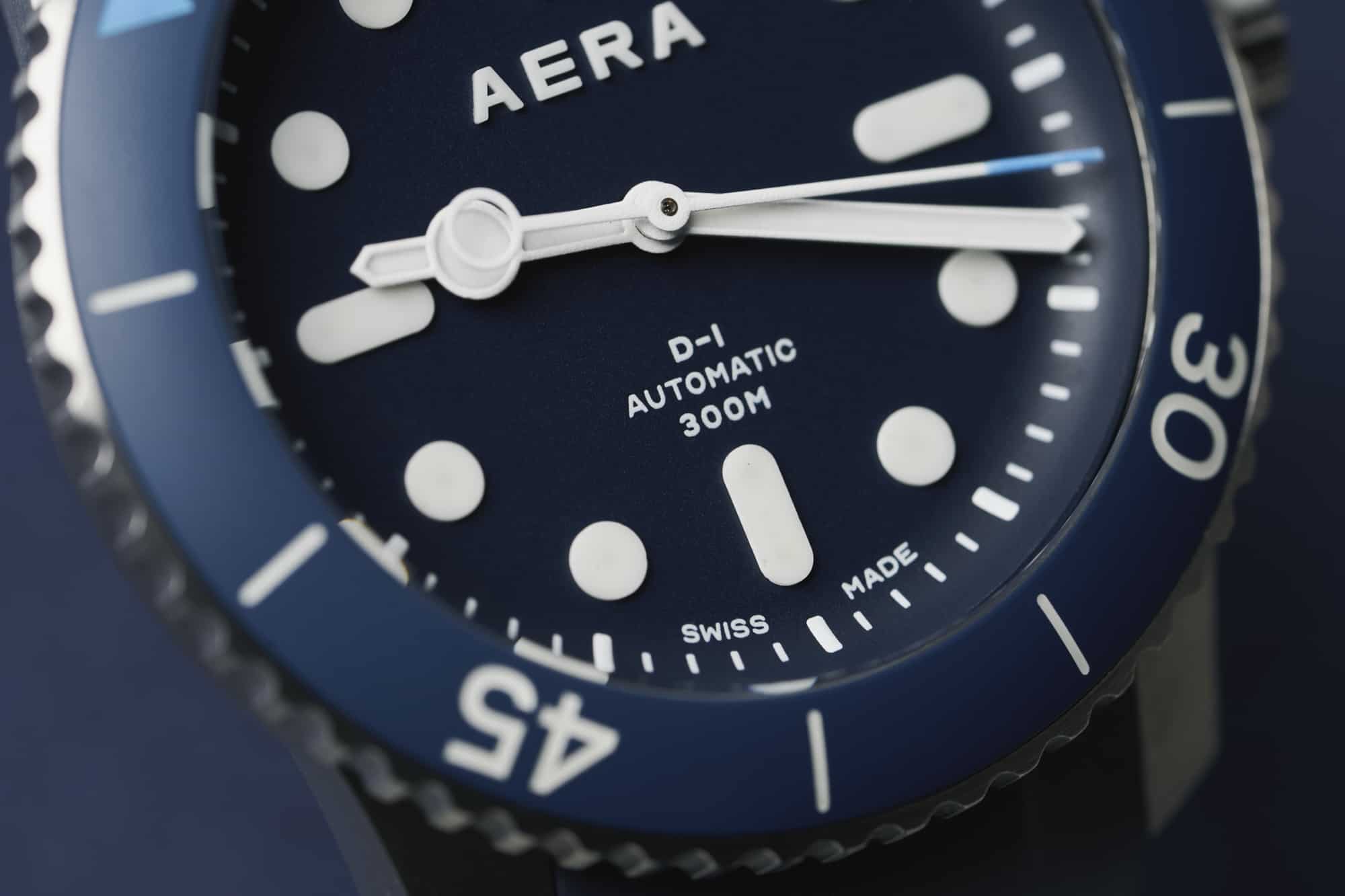Aera Instruments is a brand based in the UK that just unveiled their second collection, consisting of incremental updates to their D-1 and P-1 diver and pilot watches. The D-1 Ocean Diver is a blue version of the black watch that debuted last year, and it has a couple of small less visible refinements that improve the overall experience Aera is providing.
[Video] Hands-On: the Aera D-1 Ocean Diver
The choices they made – what to update, and what not to update – reveal something about where the brand might be heading, and what they deem important. I had a chance to briefly handle the initial D-1 and P-1 releases last year, and while I thought they were completely fine, they didn’t linger in the mind the way some watches do. I’ve been wearing the D-1 for about a week now, though, and find myself really enjoying the subtly complex design choices and distinctly contemporary vibe of this dive watch.
[Video] Hands-On: the Aera D-1 Ocean Diver
Notable Specs and Features
Looking through the spec sheet, the number that will likely jump out at most people right away is the D-1’s diameter: a healthy 44mm. And that’s not the only large number you’ll find when you take your calipers to the case. The lug to lug is 49.8mm, the lug width is 22mm, and the case height (to the top of the dramatically domed crystal) is 16mm. I imagine that a number of watch enthusiasts and collectors will see these measurements and immediately write this watch off completely. Honestly, I get it. But like so many watches we talk about (and wind up really enjoying once we get a chance to handle them) the numbers don’t tell the whole story.
Size, though, is only part of the story anyway. One of the major calling cards of Aera’s watches is the use of 904L steel (the same alloy used by Rolex), and on the wrist and in the hand, it does have a subtly different and perhaps more premium feel. One of the key benefits of 904L is in its ability to take a polish, and the satin finished case of the D-1 doesn’t really take advantage of that, but it should still have the same corrosion resistance qualities that Rolex touts in their steel sports watches. The D-1 has a depth rating of 300 meters, making it a serious, professional level dive watch.
Aera has also updated the luminescent material on the D-1’s hour markers to a Globolight compound. The solid blocks of lume have a noticeably more intense glow than a more traditional lume material, and the oversized markers do a nice job of showing this off. The movement, too, is an upgrade over the original D-1, and is now an Elabore grade Sellita SW-200.
Impressions
I’ll start here by saying I don’t feel like I’m the target market for the Aera, which makes my incredibly positive reaction to nearly everything about it somewhat confusing. I’m not predisposed to watches much larger than 42mm – I tend to gravitate toward watches that are “medium” sized by most modern definitions, but the D-1 is squarely in another category. Am I a Big Watch guy now? I’m not sure. I don’t think so, but the Aera is one of those watches that serves as a solid reminder that a measurement does not equal comfort or, in fact, any particular experience at all.
Thanks to a combination of a deeply curved, bowl-like dial, heavily rounded case sides, and lugs that appear longer than they really are thanks to being angled sharply toward the middle of the case, the D-1 not only wears smaller than the dimensions would indicate, but is quite a bit more comfortable than you’d have any right to expect. The watch is defined not by its literal measurements, but its many curved surfaces. In fact, a close inspection of the watch reveals that just about every surface is curved in some way. The bezel, lugs, and dial for sure, and each individual facet on the case is (at least) slightly curved as well. This all contributes to a wearing experience that effectively shrinks the watch, with forgiving geometry that is less harsh than what you’d normally find on a big, bruising diver.
A major part of the enjoyable wearing experience of the D-1 comes from the overall comfort factor. This is where the measurements really fly out the window, and you realize that a ton of thought has been put into the integration of the case and rubber strap. The design is such that the strap fits flush to the case with no gap, and the structure of the strap pushes it immediately downward to hug the wrist. The watch tends to ride low on the wrist, and a low center of gravity thanks to the reinforced strap keeps everything well balanced. The watch has a lot of “presence,” but it’s very tidy and, despite its size, conforms to the wrist in such a way that you nearly forget it’s there.
It almost feels like a bonus that the Aera’s dial is so legible and easy to read. Every piece of dial furniture is hospital white and contrasts sharply with the dark blue dial. It’s a traditional dive watch style layout, with circular markers everywhere but the cardinal positions, which are noted with ovals at 3, 6, and 9, and a trapezoid at 12. Because of the bowl shaped dial and domed crystal, you get some visually interesting distortion effects if you glance at the dial from the side. This would only cause actual legibility concerns in extreme scenarios, though.
Conclusion
The D-1 Ocean Diver is a success in technical terms because it’s very easy to wear, but I also happen to find a lot to like aesthetically. I have to think divers are a tough project for most newer brands. There are so many iconic references out there that have been burned into our collective consciousness as watch enthusiasts, it has to be hard to go in a different direction. The Aera isn’t something we’ve never seen before, but it resists a lot of the more traditional dive watch tropes. The case has more in common with an Ikepod than a Submariner, and the dial has a clean and simple look that is timeless, but because of the blue and white color combination on the D-1 (and the healthy application of a tech forward lume compound) it’s pushing into modern territory in the same way as divers you’d find in the Pelagos family.
Aera is asking $1,600 for the D-1 Ocean Diver, which I think is a fair price for a watch made from 904L steel with a good Swiss movement. It also comes with an additional strap of your choice besides the excellent blue rubber that it ships on (all straps have quick release spring bars for easy strap changes). There’s a quirkiness to the D-1 that lies mostly in its ability to subvert expectations, which is a thing that I frankly wish more watches were able to do. I’m interested to see where Aera is heading after this update. I’m sure they’ll have watches in other genres soon enough, but I hope they don’t stray too far from the aesthetic language they’re building. The Big Watch era might be over for most, but it’s working well for Aera right now, and I’m excited to see more. Aera









 Featured Videos
Featured Videos




